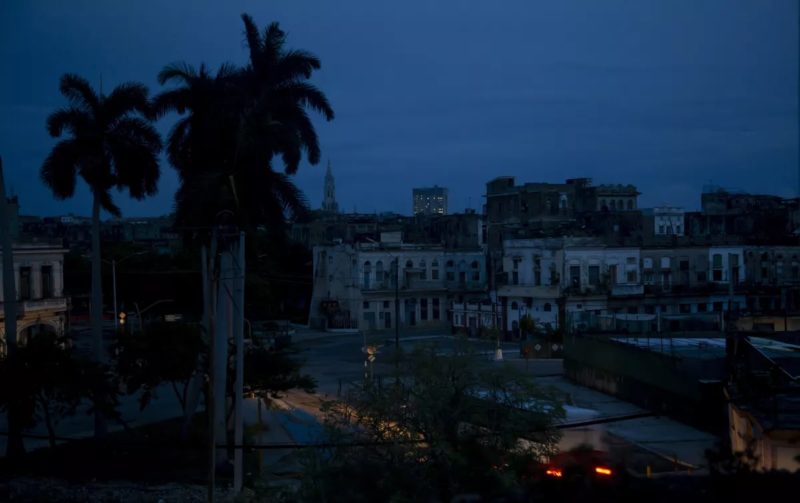Cubans Continue Shouting for Freedom from the Darkness

By Otto Niederstrasser
HAVANA TIMES – Video images of the Guanajay Children Hospital in Cuba without electricity have been making the rounds in the last weeks. Sadly, this is not an exception, since almost daily, there are complaints from parents asking for donations of antibiotics or even thermometers for their children online.
Until recently, myths created in the past by Fidel Castro about Cuba’s superior quality of medical care have been repeated ad nauseam by politically allied governments and international institutions, painting a false narrative of what is really happening on the island. The Covid-19 crisis brought to light the inability of the dictatorship to perform the fundamental tasks of a nation-state by increasingly ceding their role as providers of basic services to their exiled population.
After the passage of hurricane Ian, most of the country lost power and drinking water. The few food supplies people had in their refrigerators spoiled in the tropical heat. Although the severity of the hurricane only hit the westernmost and one of the least populated provinces, Pinar del Río, in a narrow and elongated island, there was a general power blackout encompassing the whole country.
Blackouts, a normal occurrence for Cubans since Fidel took power in 1959, now extend more than 12 hours a day and some are called “solidarity blackouts.” Outside of the rebuilt part of Havana’s old town and far from the tourist centers of the islands and peninsulas, today’s Cuba is mainly a nation of crumbling houses and broken infrastructure in need of significant updating.
These developments come accompanied by an unprecedented migration crisis. During the pandemic, the government kept the island under a strict quarantine. Regulated flights out of the country made people wait in long lines for their turn. This resulted in another mass exodus after restrictions eased.
More than 200,000 Cubans are expected to arrive in the United States by the end of the year. These numbers exceed the Mariel exodus of the 1980s (125,000) and the “Balsero crisis” of 1994 (35,000). The reinstatement of the immigrant visa with the United States by 2023, which includes the family reunification program, is being pushed to reduce the number of border crossings from Mexico and rafts from the Florida Straits.
In addition, human rights remain restricted as an authoritarian one-party state, and all opposition can be arrested, prosecuted, and sentenced to prison. Police, especially after the July 11th mass protests last year, use threats and violence to intimidate citizens, while pre-emptive arrests obstructing peaceful marches and political events are commonplace.
Since last year, more than seven hundred people have been sentenced for sedition and civil disobedience, in the largest mass trials since the beginning of the revolution in 1959, just for expressing their discontent with the situation in the country. More worryingly, the island’s leaders appear to be in a state of panic, further increasing violence by armed police and state security surveillance.
Miguel Díaz-Canel, the first secretary of the Communist Party of Cuba is now permanently in the public eye with the mission to calm the protests and dissatisfaction of the nation and calling to “resist with creativity.” Furthermore, the military appears to have taken temporary command in the western regions of the country and control of the protests under the disguise of helping with recovery efforts.





